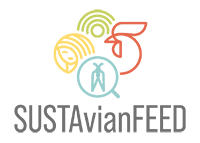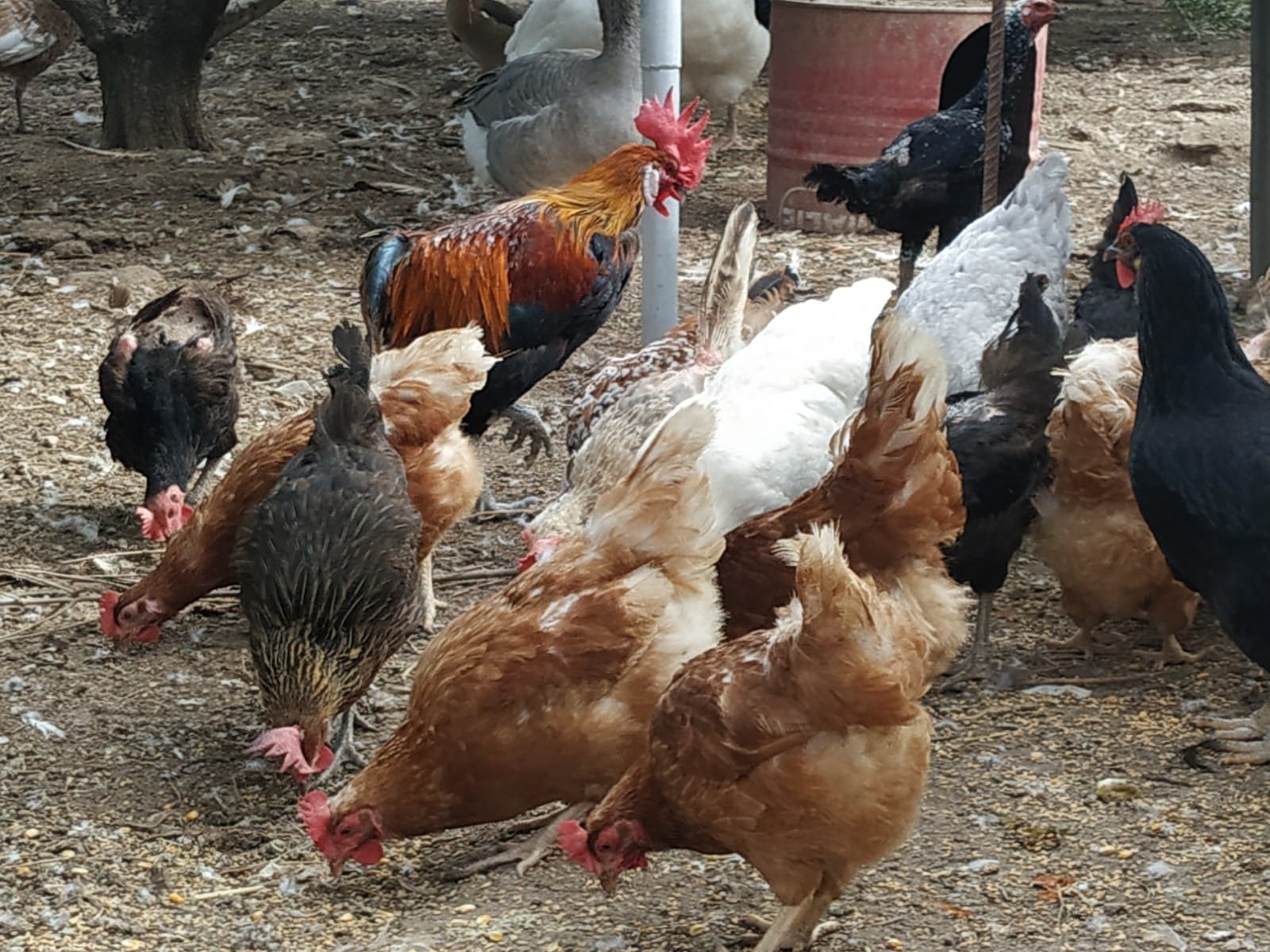In our fast-paced world, the competition for resources between the human food sector and animal feed sector is escalating. This situation emphasizes the critical need to discover innovative raw materials for livestock diets. The constant march of innovation, the emergence of potential risks, and the introduction of innovative ingredients into the feed industry require a comprehensive regulatory framework that needs to adapt and evolve. Protein sources for animal feed are becoming more expensive, environmentally damaging, and unsustainable due to the increasing demands of intensive farming practices. The main protein source used in livestock feed is soybean meal, being a key agricultural product for this sector. However, its production can impact the environment, leading to concerns about deforestation, small farmers dismantle, soil erosion and pesticide use. Balancing its role in feed production with sustainable farming practices is nowadays essential.
In the context of innovative protein source, a prime example of this evolving landscape is the recent approval of insect utilization in animal feed by the European Union, as detailed in “COMMISSION REGULATION (EU) 2021/1372 of 17 August 2021” which lays down the first regulation produced by the EU over insects use in feed. This landmark regulation, after years of rigorous scrutiny and endorsement by the European Food Safety Authority (EFSA), marks a significant shift in animal nutrition practices. However, it’s important to note that even with this authorization, ongoing safety oversight is in place, with expectations of future modifications and enhancements.
While the European Union has established regulations for using insects as a protein source in animal feed, the same cannot be said for all partner countries involved in this project, such as Turkey and Tunisia. In these nations, specific regulations for this innovative ingredient are absent, prompting the adoption of EU guidelines to ensure safety and compliance.
1. Global Regulations and Quality Standards
Around the world, especially in more developed nations, an increasing number of regulations and controls have been implemented regarding the origins of raw materials and ingredients used in animal feed. These measures set stringent quality and safety standards that are crucial for the supply of raw materials and the overall safety of animal feed. Factors such as origin, processing, handling, and storage, along with market-related considerations, directly impact both the quality and safety of the feed.
The European Union, as a “supranational” organization, plays a pivotal role in establishing rules and recommendations for its member states. This approach is particularly effective as it harmonizes regulations in countries with extensive trade relationships. Several key regulations within the European Union serve as foundational pillars for others:
- REGULATION (EC) No 183/2005: Enacted on 12 January 2005, this regulation lays down essential requirements for feed hygiene.
COMMISSION REGULATION (EC) No 152/2009: Implemented on 27 January 2009, this regulation defines methods of sampling and analysis for the official control of feed.
- REGULATION (EC) No 767/2009: Passed on 13 July 2009, this regulation addresses the placing on the market and use of feed. It amends earlier regulations and directives, establishing key guidelines.
- COMMISSION REGULATION (EU) No 68/2013: Dated 16 January 2013, this regulation outlines the Catalogue of feed materials, providing crucial insights into approved feed components.
2. Ensuring Safe and Healthy Poultry Feed
In the pursuit of an innovative and ecologically responsible poultry diet enriched with insect-based components, the SUSTavianFEED project has conducted a thorough safety assessment. This evaluation includes an in-depth analysis of the diet’s microbiological status, as well as the identification and quantification of potential contaminants.
To create a comprehensive safety framework for feed regulation, the University of Turin, a partner of the project, meticulously examined partner countries’ specific feed safety laws and regulations. This process involved documenting compliance with laws for key ingredients in poultry nutrition. The project partners, including UNITO, emphasized the importance of safety evaluations for black soldier fly larvae, especially in regions lacking specific regulations for insect-based products. To fill this regulatory gap, UNITO conducted thorough analyses covering microorganisms, aflatoxins, and heavy metals on black soldier fly larvae. These evaluations ensure the larvae are free from harmful microorganisms, aflatoxins, and heavy metal contaminants, supporting their safe use as a feed ingredient.
2.1 European Union
Feed laws and regulations within the European Union prioritize safety, quality, animal welfare, and environmental sustainability. These regulations aim to ensure that animal feed remains free from harmful substances and contaminants while promoting responsible resource use and sustainable feed ingredients to combat climate change. Additionally, the EU emphasizes transparency and traceability through strict labeling and advertising regulations.
Importantly, these regulations extend beyond the EU’s internal market, facilitating cross-border trade among member states and allowing the EU to influence global discussions on feed safety and sustainability standards. Continuously evolving to address emerging challenges and opportunities, EU feed laws demonstrate a commitment to maintaining the highest levels of safety, quality, and sustainability in the feed industry.
2.2 Turkey
In Turkey, animal feed laws and regulations prioritize livestock health, food safety, environmental sustainability, and agricultural competitiveness. These regulations aim to safeguard livestock and consumers from unsafe feed materials and additives while promoting responsible agricultural practices. Transparency and traceability are vital elements in Turkey’s feed laws, aiding in identifying and managing potentially problematic feed items. Additionally, Turkey places a strong emphasis on environmental sustainability and reducing resource depletion, greenhouse gas emissions, and excessive land and water usage in feed production.
2.3 Tunisia
Tunisia’s commitment to establishing and enforcing animal feed laws underscores its dedication to building a resilient and sustainable agricultural sector. These regulations prioritize safety, quality, and sustainability in the country’s agricultural practices. Safety is a primary focus of Tunisia’s feed laws, with stringent standards and regular inspections in place to prevent harmful substances and contaminants in feed materials and additives. This approach safeguards animal and public health, reducing the risk of diseases and zoonotic outbreaks.
In summary, Tunisia’s animal feed laws reflect its dedication to responsible and sustainable agriculture, prioritizing safety, quality, animal welfare, transparency, environmental sustainability, and economic competitiveness. These regulations shape a robust and resilient agricultural landscape, meeting food security needs while upholding global standards and benefiting its citizens and the environment.
3. Ensuring Black Soldier Fly Safety in Poultry Nutrition
Microorganisms and contaminants in animal feeds pose significant risks to both animal health and human well-being. These contaminants can be naturally occurring or introduced during feed production, potentially leading to various health issues in livestock and the risk of these harmful substances reaching consumers. Ensuring feed safety through robust quality control measures and adherence to safety standards is crucial for healthier livestock and safer food products.
Aflatoxins, highly toxic and carcinogenic substances produced by molds, can contaminate feed ingredients and pose significant threats to animal health, productivity, and food safety. Strict monitoring, storage, and handling of feed ingredients are necessary to ensure safe levels of aflatoxins.
Control of heavy metals, such as lead, cadmium, and mercury, is vital for animal and human health, as these toxic metals can accumulate in insects and along the food chain. Rigorous monitoring and mitigation strategies in feed and insect production are essential to maintain food safety and protect both animals and consumers.
4. A robust regulatory framework is needed
As we navigate the ever-changing landscape of poultry nutrition and animal feed regulations, it becomes clear that ensuring safety, quality, and sustainability is paramount. The dynamic nature of the industry, characterized by innovation and evolving demands, necessitates a robust regulatory framework.
The European Union has set a significant precedent by authorizing the use of insects in animal feed, reflecting a commitment to adapt to emerging trends while maintaining high standards of safety and quality. However, the need for ongoing safety supervision and the adoption of EU guidelines by partner countries underscore the importance of a harmonized approach to feed regulation.
The SUSTavianFEED project exemplifies a proactive stance in creating a comprehensive safety framework for feed regulation, emphasizing the importance of thorough evaluations and adherence to safety standards. The meticulous analyses of black soldier fly larvae have provided crucial evidence of their safety as a feed ingredient, particularly in regions where regulatory oversight on insect-based products is still evolving.
Across the European Union, Turkey, and Tunisia, feed regulations prioritize safety, animal welfare, transparency, and environmental sustainability. These regulations shape the agricultural landscape, ensuring the well-being of livestock, consumers, and the environment.
As we move forward, it is imperative to continue fostering collaboration and harmonization of regulations, both at the national and international levels, to ensure the equivalence of insects with other livestock feed raw materials. By doing so, we can promote responsible agricultural practices, protect animal and human health, and contribute to a sustainable and secure future for agriculture and society as a whole.




Leave a Reply
You must be logged in to post a comment.